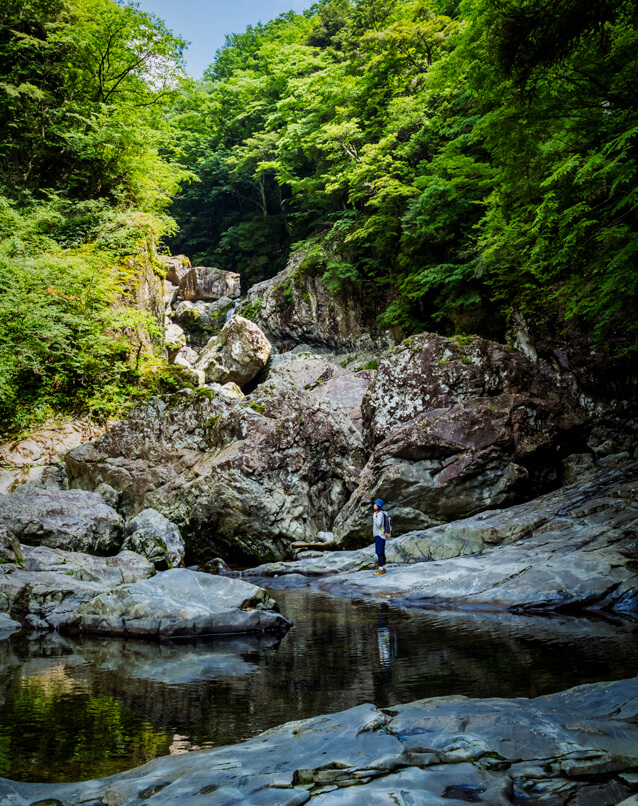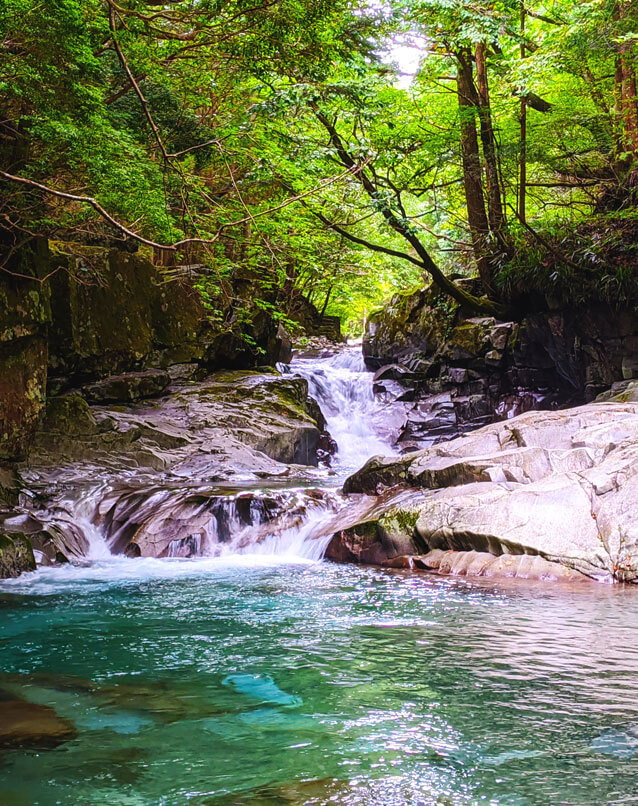Appreciating Nature
Nature in Tenkawa Village
The region spanning Odaigahara, Mount Omine and Osugi Valley, stretching across Nara and Mie Prefectures, has been recognized as a "UNESCO Eco-Park." It is acknowledged as a model area aiming for a "sustainable lifestyle" where humans coexist with nature. While the principle of World Natural Heritage is to preserve untouched nature, UNESCO Eco-Park initiatives focus on achieving harmony between ecological conservation and sustainable utilization (the coexistence of nature and human society).
The "UNESCO Eco-Park" consists of three zones: the "Core Area," the "Buffer Area," and the "Transition Area."
The "Core Area" is a region where diverse and beautiful ecosystems are preserved, characterized by primitive nature. It serves as the source of water, an invaluable place where life begins.
The "Buffer Area" surrounds the "Core Area" and plays a role in providing a buffer. It becomes an opportunity for contemplating the workings of nature through activities such as hiking and climbing.
The "Transition Area" is a region where people engage in various societal activities while benefiting from the blessings of nature. Practices such as traditional forestry, locally transmitted preserved foods, hot spring towns supported by worshippers’ faith, and the wisdom of living harmoniously with nature challenge us to question the meaning of "true prosperity."
The whole area of Tenkawa Village, blessed with beautiful natural features like mountains, clear streams, and valleys, has been designated as a UNESCO Eco-Park.
Blessed with towering mountain peaks, pristine rivers, and deep valleys, Tenkawa Village is a place of stunning natural beauty, with approximately one-fourth of its area designated as part of the Yoshino-Kumano National Park.
Particularly, the Mount Omine Range, often referred to as the "Roof of the Kinki Region," boasts the highest peak in the area, the Hakkyo-gatake (1915 meters), earning its place among Japan's One Hundred Famous Mountains.
Flowing from this mountain range, the clear streams have led to Tenkawa Village being selected as one of the "100 Villages of Water" by the Ministry of Land, Infrastructure, Transport and Tourism. The Dorogawa Springs in the village have been chosen as one of the "Best 100 Waters" by the Ministry of the Environment of Japan.
Approximately 1 million years ago, the vast plains that once extended across the land gradually uplifted, rising to an elevation of about 2,000 meters. As evidence of this, flat terrains reminiscent of the ancient plains can still be observed on mountains such as Mount Sanjo-gatake, Mount Misen, and Okami-daira Plain.
In the Dorogawa region, limestone rocks pushed up from the seabed have given rise to numerous limestone caves and pristine waters rich in minerals. The vicinity of Mount Misen and Mount Hakkyo-gatake features unique vegetation, including the primeval forests of conifers such as fir and spruce which are survivors from the glacial period, and the habitat of the Oyama-renge (Siebold's magnolia), designated as a Natural Monument by the government.
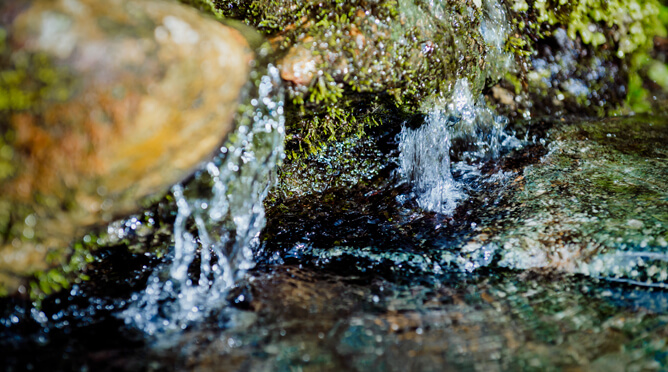
Dokawa Springs Group
The Dokawa Springs Group consists of three springs: Goro-goro Water, Izumi-no Mori, and Shinsendo. These springs have been cherished and carefully preserved, embraced by the local community with both familiarity and deep religious reverence. Flowing from the unique geological formations of granite and limestone, these springs provide delicious water with a moderate mineral content, which both tastes good and is beneficial for the health.
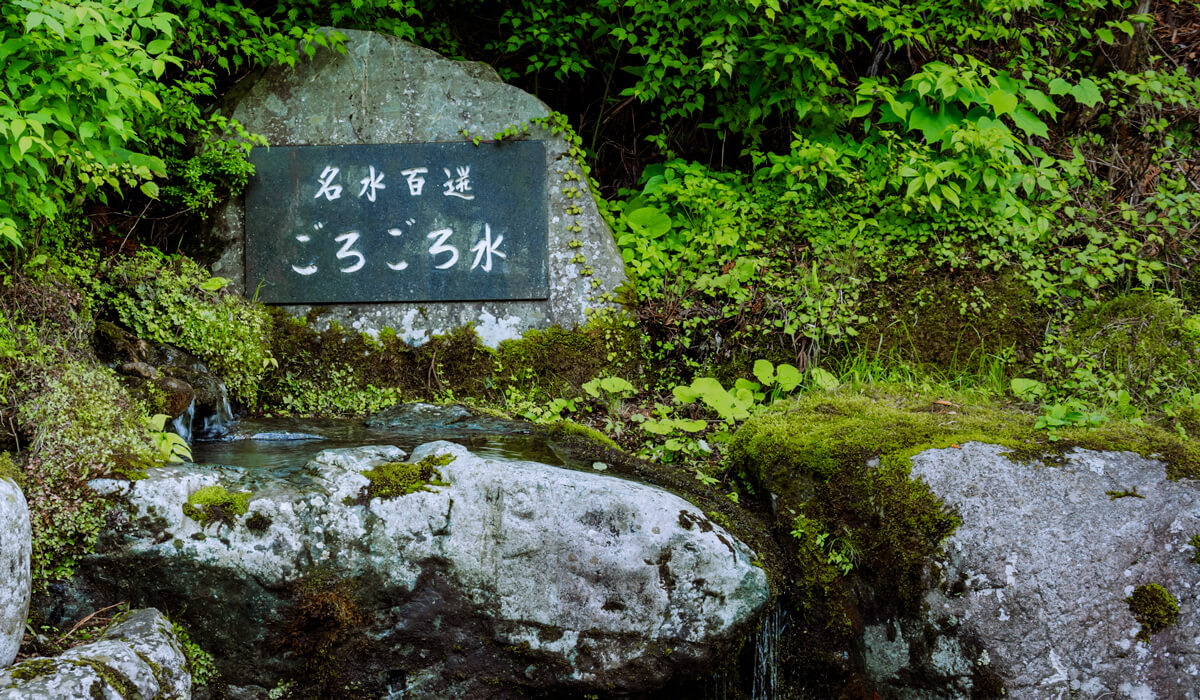
Selected for "Best 100 Waters" by the Ministry of the Environment
Goro-goro Water
Legend has it that En-no Gyoja (the founder of Shugengo), drank water from this location while descending from Mount Sanjo-gatake. He named it "Goro-goro Water" due to the sound resembling the rolling of small stones as the clear water flowed from the depths of the cave. The water temperature is 10.4°C, and it is a cold, naturally carbonated water with a calcium carbonate composition. There is a water collection point where visitors can take water.
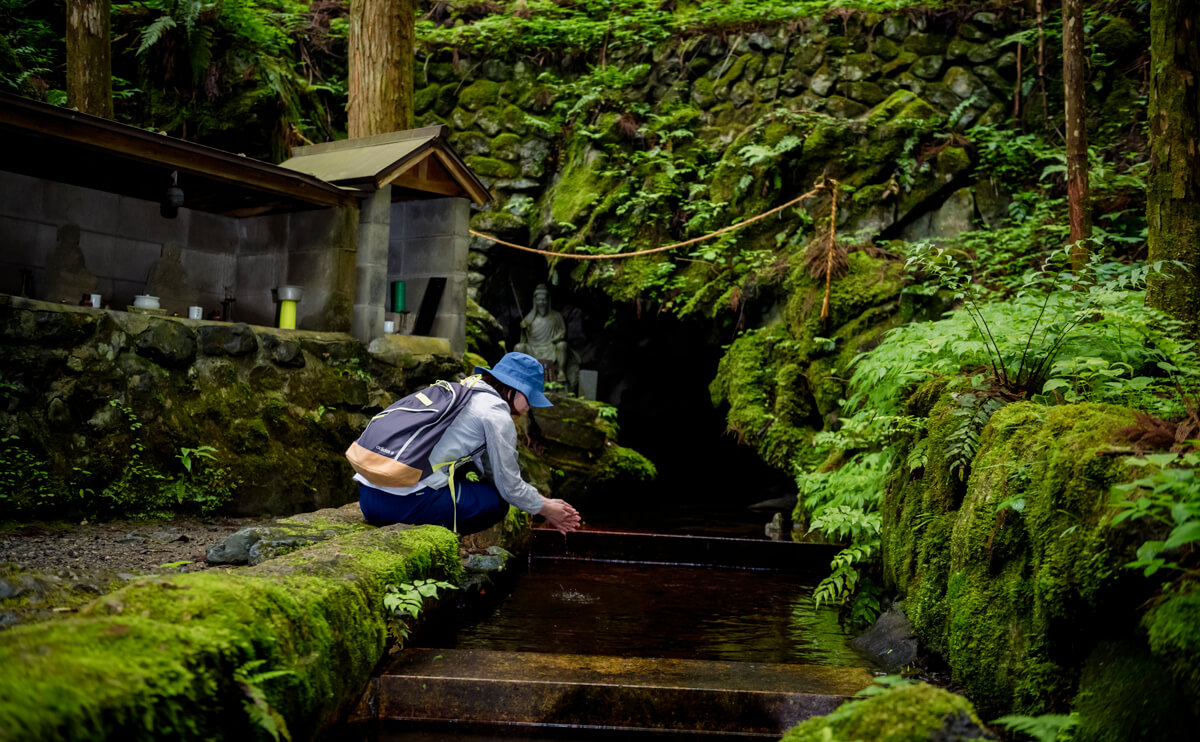
Izumi-no Mori
This clear spring emerges from a cave deep behind a sacred tree that is over 300 years old. In the Dorogawa region, a guardian deity has been enshrined at the so-called Demon Direction (the evil direction), preventing diseases and malicious individuals from entering the village. Izumi-no Mori spring is located near the shrines dedicated to Daijo Gongen, as well as small shrines for the Six Jizo and Fudo Myo-o, all serving as protective deities. The water from Izumi-no Mori has long been regarded as "divine water" in Dorogawa and has been carefully preserved since ancient times.
Shinsendo
The clear water flowing through the caves has an uncertain source and destination. Due to its mysterious beauty, it has become an object of faith for the villagers, referred to as the "Spring of the God." The spring is not accessible to the general public.
Embark on an underground exploration into a dreamlike palace
Stalactite Cave
In the Dorogawa area, there are caves of various sizes, all situated in limestone terrain. Water seeping into the cracks of the rocks over many years has slowly dissolved the limestone, creating expansive and intricate cave formations.
-
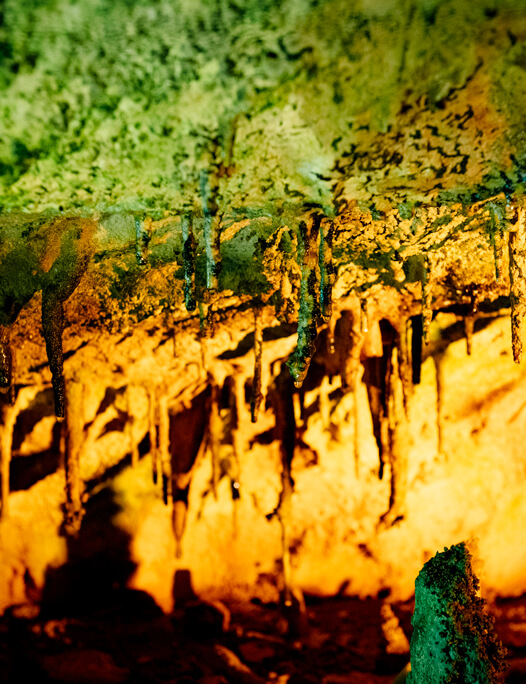
Menfudo Stalactite Cave
Discovered in 1933 at an elevation of 878 meters, this cave underwent a five-year excavation. The surrounding area is characterized by sedimentary rocks, including limestone. Stalactite caves are formed as rainwater containing carbon dioxide dissolves the crevices in the limestone, gradually creating large caverns. With a length of 280 meters, the cave's interior, sheltered from the wind, maintains an average temperature of 8°C. Particularly precious within the cave are the straw stalactite formations.
-
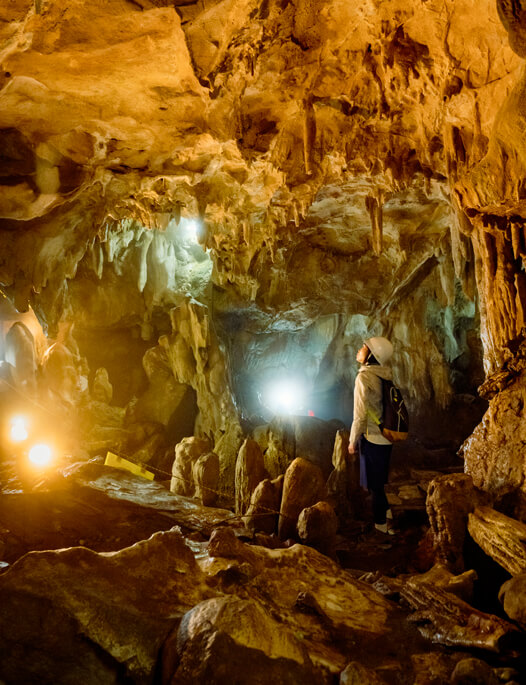
Goyomatsu Stalactite Cave
Discovered and meticulously completed by the man named Goyomatsu Akai, this stalactite cave reaches a depth of over 80 meters. The stalactites vary in size from 20 to 30 centimeters, with some reaching as large as 3 to 4 meters. The largest stalactite column, known as the Great Golden Column reaches a height of 8 meters. Stalactites are formed as water droplets containing limestone and carbon dioxide drip or flow, and it is said that it takes 100 to 200 years for them to grow by just 1 cm.
-
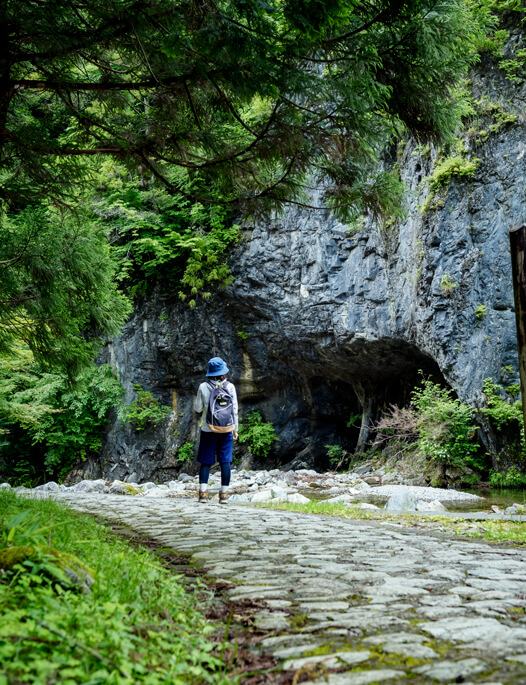
Toro Mantis Cave
"Toro" refers to "mantis." The name of the cave is derived from the posture of a mantis raising its head when angered. The name symbolizes the vulnerability of hitting one's head when entering a cave, imparting the meaning of leading a humble and modest life. This site holds significance as a place for ascetic practices in Shugendo. It is also recognized as a wintering ground for swifts.
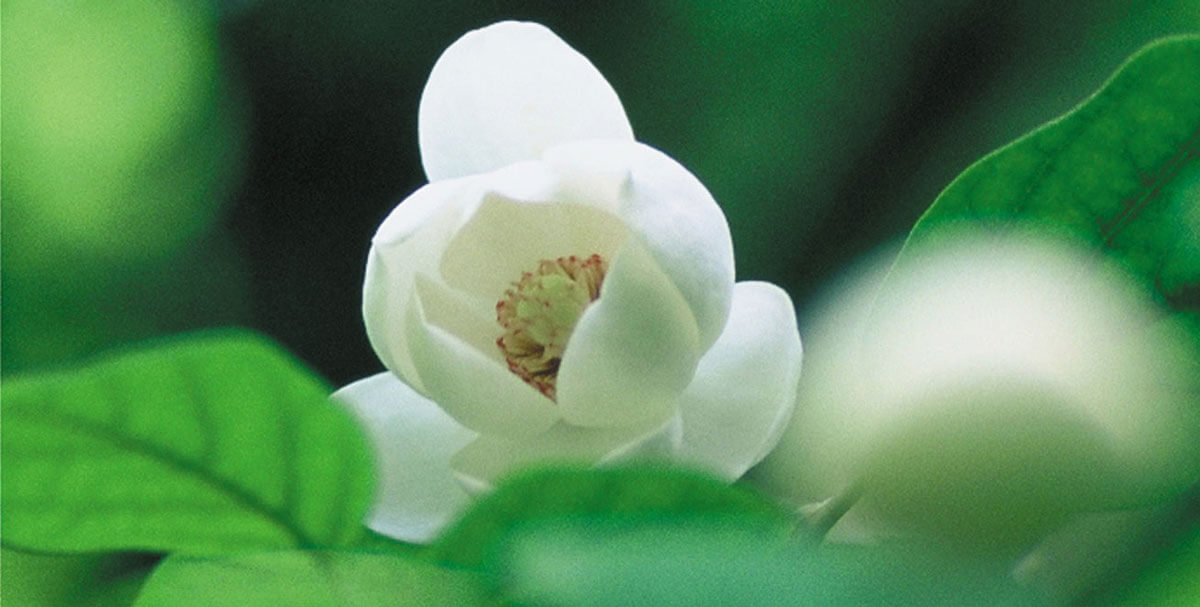
The natural habitat designated as a Natural Monument
Oyama-renge
(Siebold's magnolia)
The term "Oyama” means Mount Omine, referring to the large peaked mountain. It is also known as the “Flower of Heavenly Maiden.” The name comes from the fragrant flowers that bloom in the deep mountain valleys, reminiscent of the goddess Benzaiten, who is worshipped on Mount Misen. In 1928, the entire area around Mount Misen and Mount Hakkyo-gatake was designated as a National Natural Monument. In recent years, the plant has faced the threat of extinction due to damage caused by wild deer, but conservation efforts, including the installation of deer fences, are being implemented.
 Tenkawa Village Sightseeing Website
Tenkawa Village Sightseeing Website